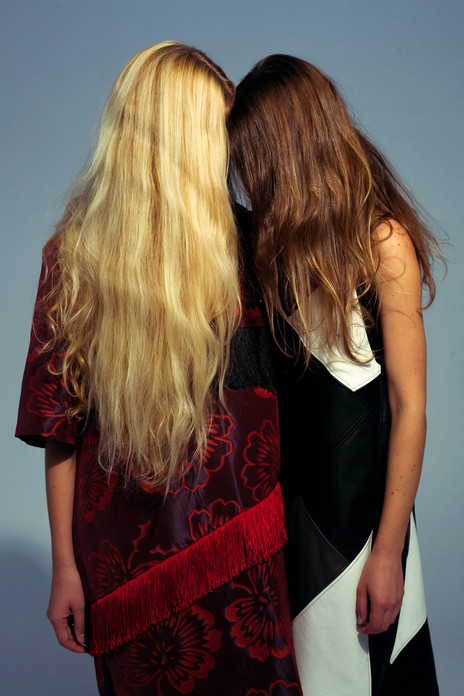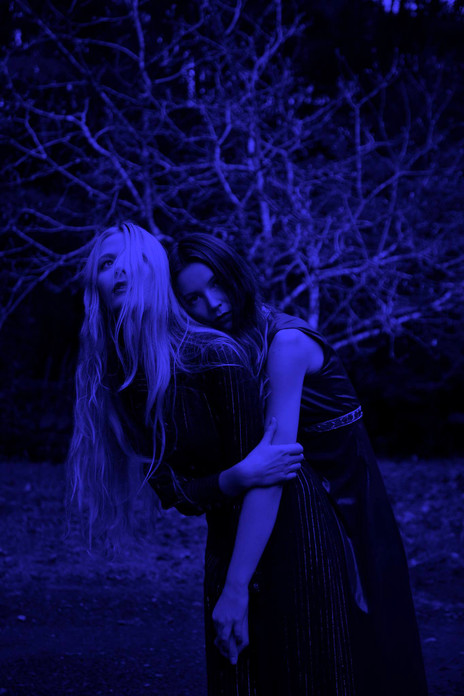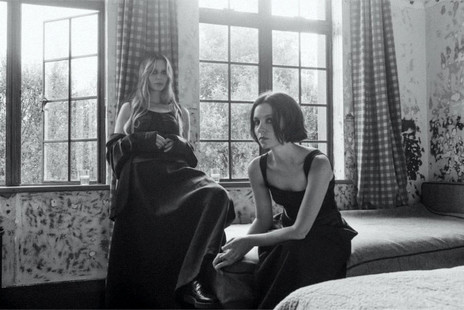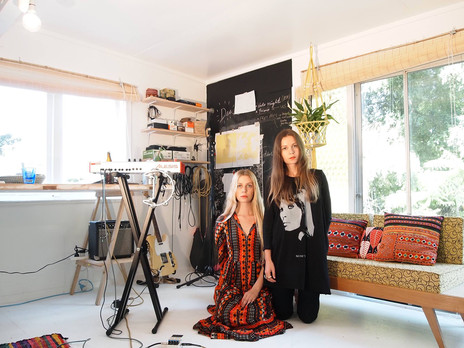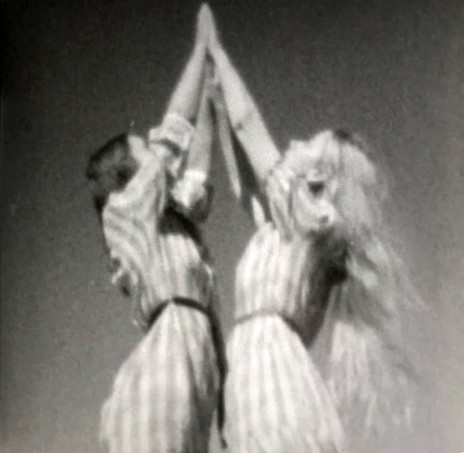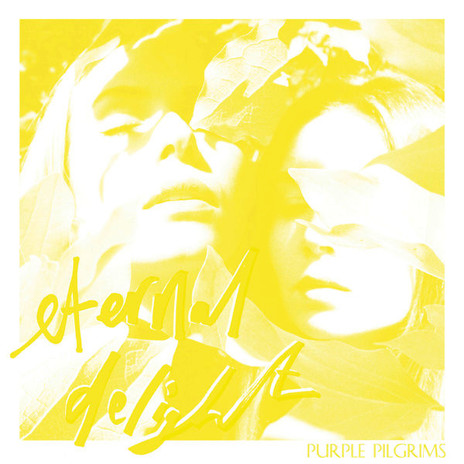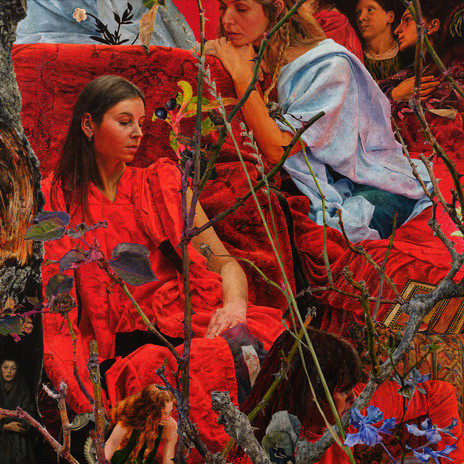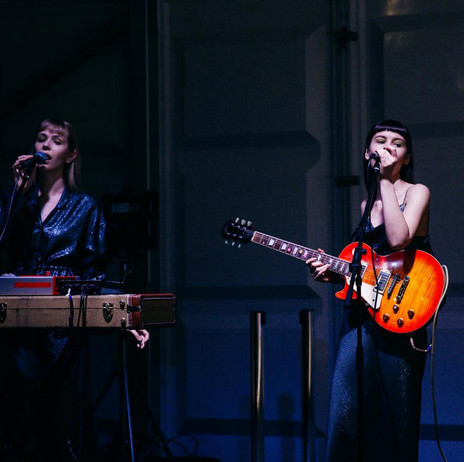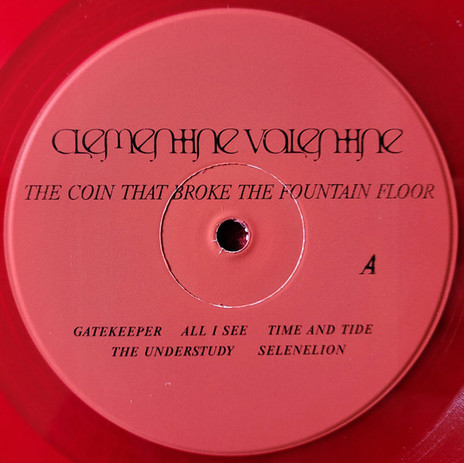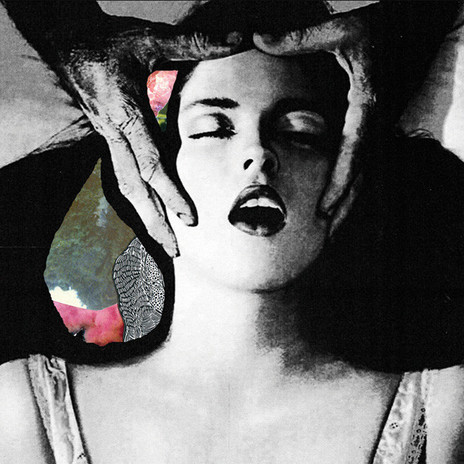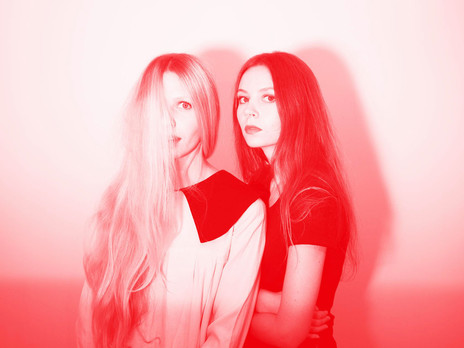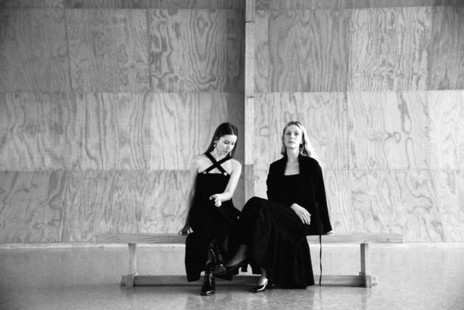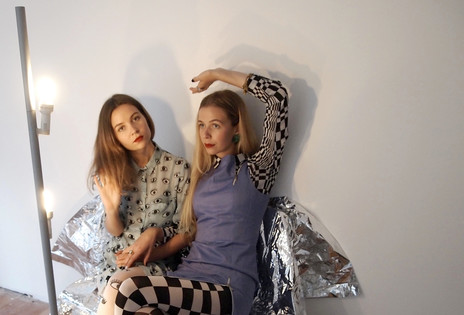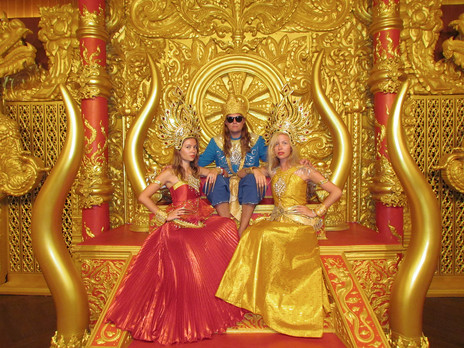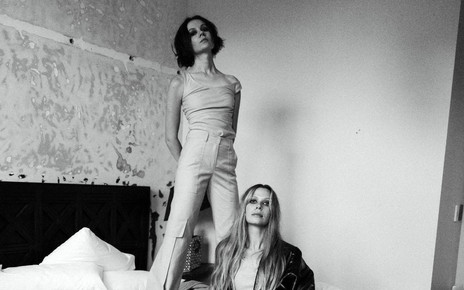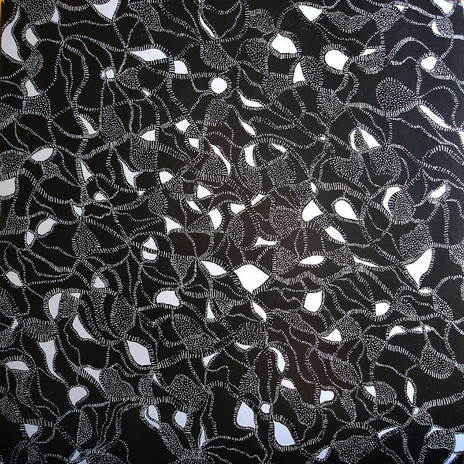A childhood between countries
The daughters of an artist, and a writer and poet who taught classics, Clementine and Valentine Nixon were raised between their hometown of Christchurch and the skyscrapers of Hong Kong, with time spent in Borneo, Sri Lanka, and Indonesia. During their childhood, their parents and grandparents nourished their love of dance, music and literature. A big part of this was the influence of a grandmother, who introduced them to the rich folk music traditions of her traveller heritage. For Valentine in particular, her grandmother’s tuition enabled her to learn a large repertoire of ancient songs.
While they were outside New Zealand, their parents took their education into their own hands. As Clementine and Valentine told me in a 2014 interview for New Zealand culture website Vanguard Red, “We were free-schooled at home, free to learn about the things that naturally intrigued us – which was a lot of ancient history, mythology and the like.”
The result was an environment that nurtured a psychic siblinghood between the sisters. “It’s like a sisterly telepathy,” Clementine said in an interview with Fiona Ralph for Woman. “We have such similar reference points and perspectives and tastes. It feels like we completely understand each other.”
Purple Pilgrims
By the time the sisters had finished high school the family was back living in Christchurch, and they began recording music with a couple of amps, guitars, a tape recorder, and borrowed microphones. At the time, Clementine was studying at art school and working at The High Street Project, an experimental art gallery that played a central role in the city’s sonic arts and experimental music community. When Valentine was 18, they played their first show as Purple Pilgrims (paying homage to Prince) and were welcomed into the local counterculture.
Not long after their first performance two pivotal things happened. First, in the wake of the February 2011 Canterbury earthquake, they watched liquefied volcano silt swamp their family home, an apartment inside one of the oldest buildings in the city. Second, they recorded their self-titled EP for the PseudoArcana label before abandoning Christchurch for Hong Kong, where they quickly found their footing within the underground music scene.
In PseudoArcana boss Antony Milton’s words, “I first experienced Purple Pilgrims live in a small Lyttelton club, sweet keening ethereal folk songs that made me want to cry, run through a line of op-shop guitar effects and into a single tiny guitar amp that put up a brave warbling fight and never gave up its ghost. I was struck by their complete lack of artifice, and served a welcome reminder that the simplest and most heartfelt of music can move one to the depth of one's soul. It was a goosebump performance.”
Part of what made that first EP stand out was its exquisitely realised collage cover art and the hand-sewn zine included with the lathe cut and CD-R versions. Here, Clementine’s art school skills came to the forefront, as the sisters were able to – between their stage shows, recordings and visual presentation – create a unified and captivating identity for themselves.
After some of those lathe cuts and CD-Rs landed in the right hands, the sisters took part in a series of tours throughout America and Europe. In their downtime, they’d return to Hong Kong, where they worked as English teachers and played shows in art galleries and warehouse spaces. During these years, the sisters befriended a range of open-eared North American musical figures, including Helga Fassonaki, Ensemble Economique, Weyes Blood, Britt Brown from Not Not Fun Records, and Gary War.
Collaboration
In 2013, they released a split 12" with Gary War on the UK label Upset! The Rhythm. Recorded with Gary at his home studio in Massachusetts, the three Purple Pilgrims songs on the release saw their noisy drone-folk sound coalesce into something more medieval and haunting. As Sam Hockley-Smith put it for Pitchfork, “‘Earthly Heaven/Joon’, the closing track from their split LP with garbled noise dude Gary War ... manages to make isolation seem more beautiful than terrifying by playing loosely with structure.” Clementine and Valentine’s sound wasn’t yet fully formed, but the outline was increasingly clear.
That year, the sister’s parents decided to return to New Zealand from Hong Kong, this time opting to settle in Tapu, a small village on the western side of the Coromandel Peninsula. When Clementine and Valentine followed them back to the land they’d purchased there, they were overcome by the region’s natural beauty. As Clementine told me for Rolling Stone Australia in 2023, “Having lived in these urban settings like Hong Kong, the environment was a massive experience for us. We became far more connected to it, and we embraced that.”
Eternal Delight and Perfumed Earth
In Tapu, they were able to set up a small recording studio inside a shed on family land. There, they began to write and record their debut album, Eternal Delight, released in 2016 through Not Not Fun Records. Valentine told me, in a 2016 interview for UK music website The 405, that Eternal Delight was the product of the sisters working without a set schedule, writing and recording when and as they felt like it between river swims, sun-drowning, reading and reflection.
During the final stages of recording, Gary War helped them out with bass guitar and drum machine parts, adding his touch to their silky synths, subtle percussion, traditional Chinese instruments, and angelic vocal arrangements, which, at the time, I described as “serving as siren calls to suspend disbelief and journey beyond the doors of perception into the depths afforded by imagination.”
On release, Louisa Kasza at Under The Radar wrote, “Eternal Delight also evokes the Western canon of literature and ideas at every turn, from the album title’s nod to William Blake’s line ‘Energy is Eternal Delight’ to the sound of a frenziedly scrawled love letter that makes up the opening track, through to a later evocation of the Oracle of Delphi in ‘False Friend (Pythia)’.” She continued, “The sisters also pay homage to the more modern canon of pop music as well as to their folk roots, with elements of Beach House, Kate Bush, Cocteau Twins and, more generally, ceremonial dream-pop with a smattering of psychedelic funk. A sense of physical and geographical place also shines through, that place often being the Coromandel – or more specifically, the bush at Tapu on a cool, perhaps ghost-and-UFO-ridden night.”
Three years later, when they released their second album, Perfumed Earth, through Flying Nun Records, Clementine and Valentine worked with many of the same themes as on Eternal Delight. After spending so long in Hong Kong’s concrete cityscape, revelling in nature was too good to let go of too quickly. This time, they continued to write and record at home while calling on a cast of collaborators, including Auckland-based saxophonist and improviser Jeff Henderson and the Christchurch-based guitar experimentalist Roy Montgomery, whom they’d collaborated with a year before for his Suffuse LP.
On release, Perfumed Earth was reviewed favourably by Pitchfork’s Madison Bloom, who described its real triumph as “... its lush melodies, strands that wind and splay like a carpet of vines.” It also featured as the album of the day on Bandcamp Daily, where Loren DiBlasi described it as “A grim fairy tale rooted firmly in the past…” and “an eerily tranquil reminder that some terrors are timeless.” In this assessment, Loren identified the deep folkloric roots that underscore the lush dream pop and cosmic jazz elements of Clementine and Valentine’s first two albums.
Having acquired North American and European management, booking agents and publicity teams, the sisters continued to tour overseas and perform around New Zealand between albums. Ostensibly, their core audience was overseas, in the underground scenes in which they’d played shows. At home, however, they began to be presented with offers from commercial record labels and high-end fashion houses, as well as bookings at city art galleries and prestigious events like St. Jerome's Laneway Festival.
In Valentine’s words, “We had this pretty weird jump from the experimental underground to having major labels emailing us and having meetings with them in boardrooms. At the end of the day, we’re just a couple of home-schooled kids who just do what we’ve always done. We’ve kind of existed in a little bit of a bubble for our whole lives.”
As their avant-garde reputation preceded them, they even took part in an interview with Radio New Zealand’s The Wireless platform about what types of food would sound like if they were music.
Aberdeen epiphany
In late 2019, Clementine and Valentine travelled to New York for a three-show residency at Union Pool in Brooklyn, where they performed with L’Rain, Deradoorian, C. Spencer Yeh, C. Lavender, Brooks Ginnan, Constant Smiles, and yek koo (Helga Fassonaki). On stage, they were accompanied by a multimedia visual show with a custom scent flowing through the venue.
As 2020 dawned, the sisters headed to Europe and the UK to play more shows. During the early days of that tour, they arrived in Aberdeen, where they had an experience that shook them to their core. Valentine told me for Rolling Stone Australia in 2023, “We knew we had connections to the area, but when we went to the venue, the show organiser said, ‘You have to see the opening act tonight. We’ve got something special planned.’”
In the 1960s, Aberdeen was a regular stop for Clementine and Valentine’s great-grandfather Davie Stewart, a fabled street musician and wandering troubadour who was recorded by the American ethnomusicologist Alan Lomax. Well over half a century later, the sisters walked into the venue they were playing that night and were floored over to see the Scottish experimental folk musicians Barrett’s Dottled Beauty (Alan Davidson and Gayle Brogan) performing a cover of one of their great-grandfather's songs. “They were literally even performing on a stage our great-grandfather used to perform on,” Valentine said. “It was like time had somehow collapsed and brought us together.” Clementine concurred: “It was extremely profound and something we never even expected.”
At the end of the night, Alan Davidson took the sisters on an after-dark tour of the town and showed them the street corner he remembered seeing their great-grandfather busk on in the 1960s. Over the following months, Clementine and Valentine realised that they had been living very similar lives to their traveller ancestors. At the time, they had been operating under the assumption that they found their way into music through Christchurch’s experimental music underground. When they looked at things closer, their musical pursuits felt intergenerational or perhaps even ordained by fate.
Not long after, the global pandemic began to set in, and they made their way back to New Zealand, where they played several concert hall shows with performers such as Weyes Blood and Aldous Harding before retreating home to Tapu for our first national lockdown. Viewed retrospectively, it was a moment when dreams and hopes everywhere were dashed against the jagged rocks of the unknown. “We had a lot of plans, huge plans, and there was a lot of excitement,” said Valentine. “But what happened wasn’t unique to us. It was a collective experience.”
The Coin That Broke The Fountain Floor
In the isolation Tapu afforded them, Clementine and Valentine began to write and demo the nine escapist folk songs turned high-gloss art pop that became their third album, The Coin That Broke The Fountain Floor. Created with the New York‑based producer Randall Dunn (Oneohtrix Point Never, Jim Jarmusch), celebrated session drummer Matt Chamberlain (David Bowie, Lana Del Rey, Fiona Apple), Gary War and an extensive cast of session players drawn from their musical communities, The Coin That Broke The Fountain Floor came out in late August 2023 through Flying Nun Records.
On release, Rolling Stone Australia’s Conor Lochrie called the album “a thing of quiet majesty, the songs sincerely affecting.” Over on Elsewhere Graham Reid described The Coin That Broke The Fountain Floor as “an album bathed in a kind of golden light and Pre-Raphaelite mystique.” Notably, it also represents the moment when, after several cancelled European tours and accompanying introspection, the sisters decided to retire their Purple Pilgrims alias and begin performing as Clementine Valentine. “It just felt like a necessity,” Valentine said. “It was the most natural thing for us to do, and in that connection, we connected with ourselves.”
In September 2023, the sisters went on a national tour of New Zealand. Since then, they’ve been demoing new material and preparing to return to North America and Europe for further tours. Thinking about their journey to date, I found myself reflecting on something Valentine told me when I interviewed the sisters for The 405 when they had just released Eternal Delight in 2016.
"We definitely learned a lot in recording this album, but our main philosophy in music remains the same: to never close our minds to anything or put ourselves in a box,” Valentine said. “As soon as one starts to identify fully with a certain scene or style, they begin to set themselves rules. We think this only results in the sudden death of anything interesting, not just for the listener but for the makers themselves. You've got to keep things interesting, or what's the point?” Seven years on, her words still resonate, clear and true.
